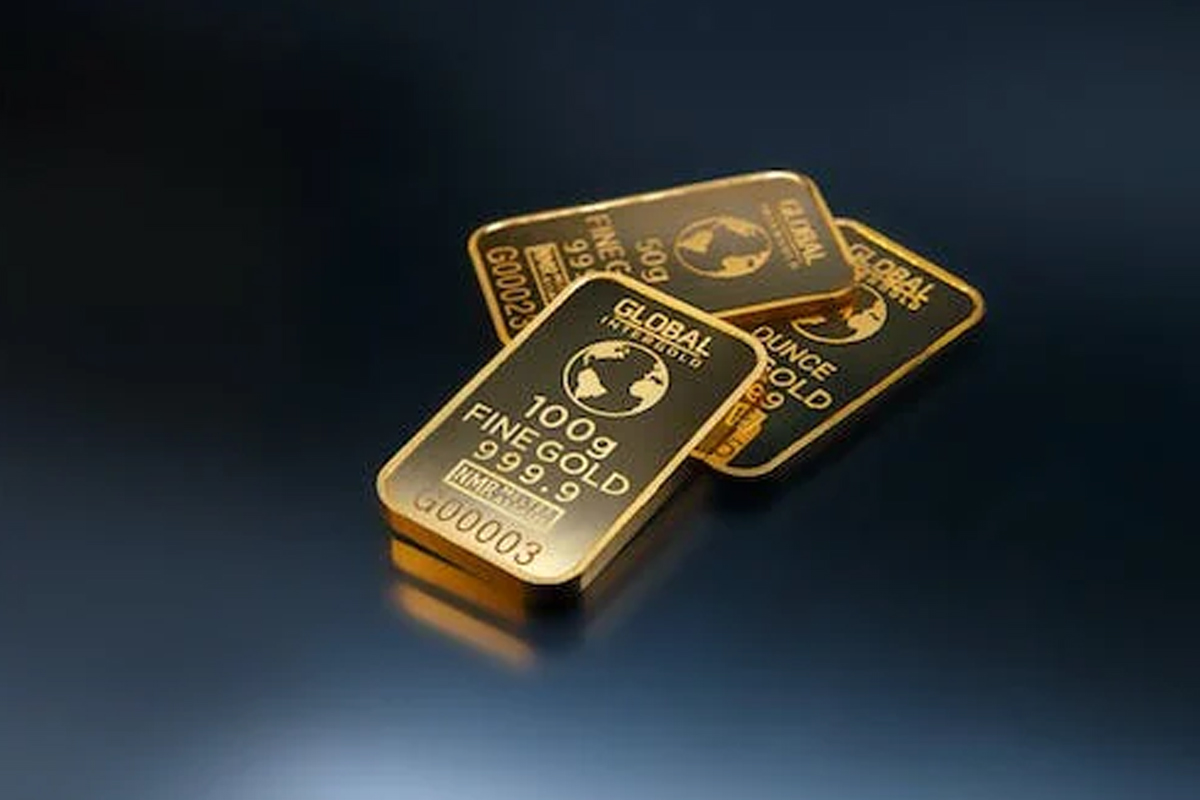Gold Pulls Back After Record Surge on Trump Tariffs Jolt Markets
Gold prices retreated slightly after reaching a historic high, driven by U.S. President Trump's sweeping new tariffs. The temporary dip comes amid strong investor demand for safe-haven assets, rising central bank gold purchases, and heightened market uncertainty. Meanwhile, silver and other metals faltered under sector-specific trade concerns.

Gold prices took a breather on Thursday after smashing through yet another all-time high, as investors processed the ripple effects of U.S. President Donald Trump’s sweeping new import tariffs. The metal, widely viewed as a safe-haven asset during times of geopolitical and economic turbulence, had briefly soared to $3,167.57—its highest level ever—before edging lower amid profit-taking and a momentary cooling of market panic. By mid-morning in London, spot gold was down 0.5%, trading at $3,119.09, while U.S. gold futures slipped 0.9% to $3,138.
The latest price action underscores just how sensitive the gold market has become to political risk and policy shifts. Wednesday’s tariff announcement marked a dramatic escalation in the U.S. administration’s trade stance, with a blanket 10% levy on most imported goods and steeper penalties on certain trading partners. Though some commodities—like copper, gold, and key strategic minerals—were exempted, the broad scope of the measures rattled global investors. Stocks dipped sharply across major indices, while bond yields fell and demand surged for perceived safe assets.
Gold, which has already gained 19% in 2025, has become a financial refuge amid an environment of mounting uncertainty. The metal’s recent climb has been supported not just by fear-driven speculation but also by strong fundamentals. Central banks, especially in Asia and the Middle East, have continued to increase their gold reserves as part of a long-term move to diversify away from the U.S. dollar. Simultaneously, institutional investors have been pouring money into gold-backed exchange-traded funds, adding yet another layer of upward pressure on prices.
Adrian Ash, director of research at BullionVault, said the current market dynamics paint a worrying picture for the global economy. “Weaker trade, higher input costs and shrinking margins are badly hurting the stock market, while geopolitical mistrust is deepening,” he noted. “Such a gloomy outlook for economic growth offers the perfect backdrop for further gains in gold.”
But not all precious metals are enjoying the same attention. Silver, often viewed as gold’s more volatile cousin, tumbled 4.4% to $32.54—its lowest point since March 11. The drop reflects growing concerns over industrial demand, particularly in the semiconductor sector where silver plays a critical role. The imposition of a minimum 10% tariff on semiconductor-related imports has raised alarms among manufacturers and traders alike. “Since the introduction of a minimum 10% baseline tariff in countries importing semiconductors, where silver is used extensively, demand has become a concern,” explained Jigar Trivedi, senior analyst at Reliance Securities. “This is why we are seeing selling pressure in silver.”
Platinum and palladium, two other industrially sensitive metals, were also caught in the downdraft. Platinum fell 2.4% to $960.45, while palladium slipped 1.6% to $954.75. These metals are closely tied to the health of the automotive sector, which is currently grappling with both regulatory challenges and supply chain disruptions. Unlike gold, their value is more exposed to production and consumption cycles, making them less attractive when economic growth appears threatened.
Despite the brief pullback in gold, analysts remain optimistic about its medium-term trajectory. Strategists at ANZ expect the metal to hit $3,200 within the next six months, citing continued central bank purchases and strategic fund reallocations as key drivers. The sentiment is echoed by market movements: COMEX gold warehouse inventories have risen in recent weeks, suggesting that investors are preparing for a prolonged period of uncertainty.
While the ultimate impact of Trump’s tariffs is still unfolding, the immediate effect is clear: heightened volatility, market anxiety, and a renewed spotlight on gold as a protective asset. Whether the tariffs succeed in recalibrating global trade dynamics is a political question. But in financial markets, they’ve already triggered a reaction that’s echoing across currencies, equities, and commodities alike.










